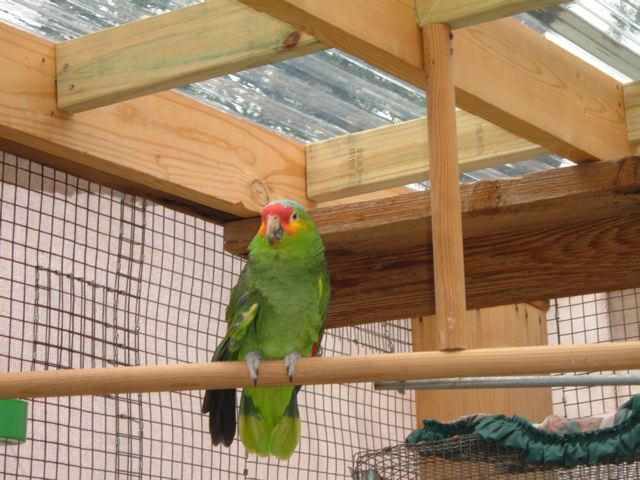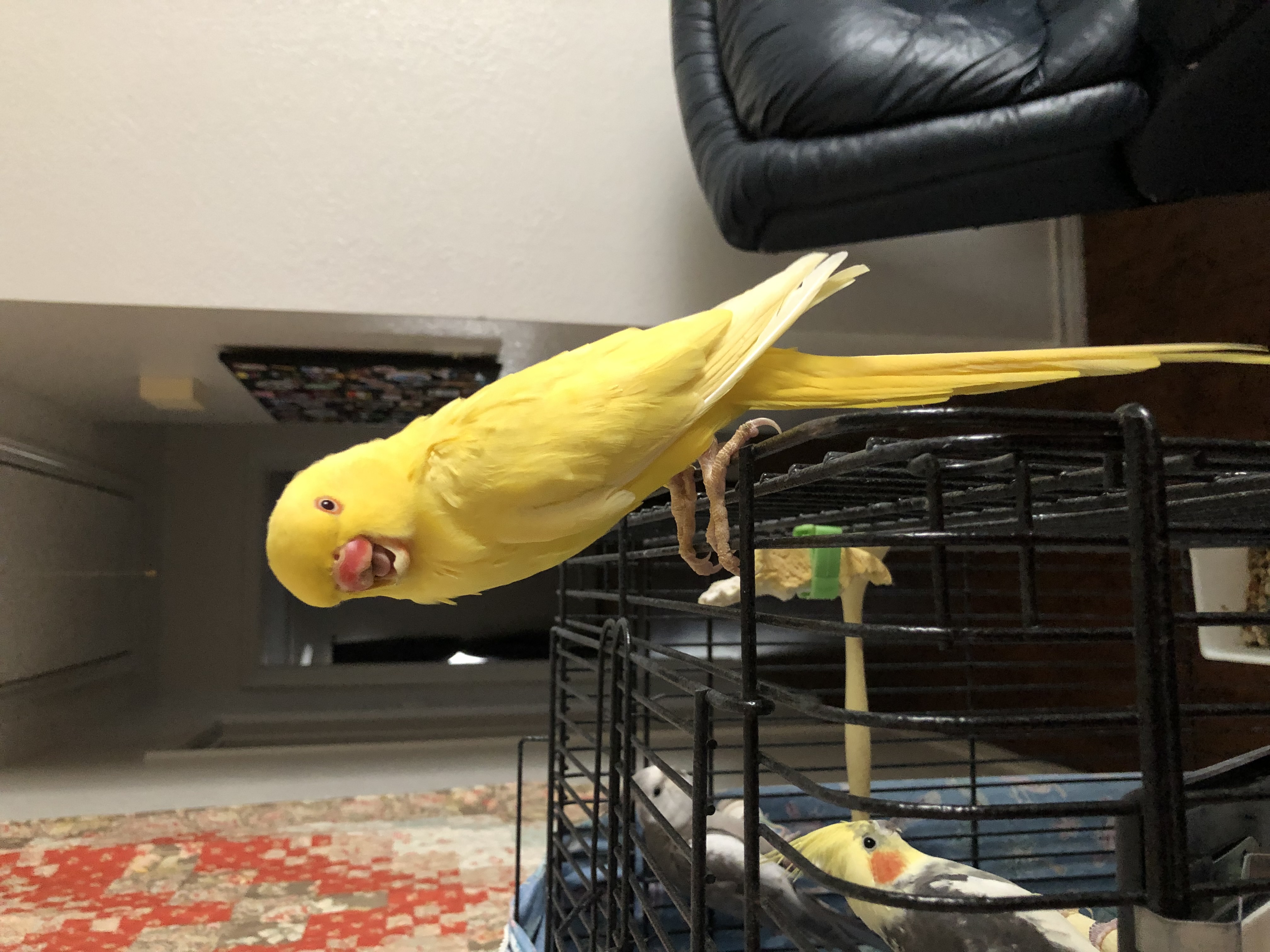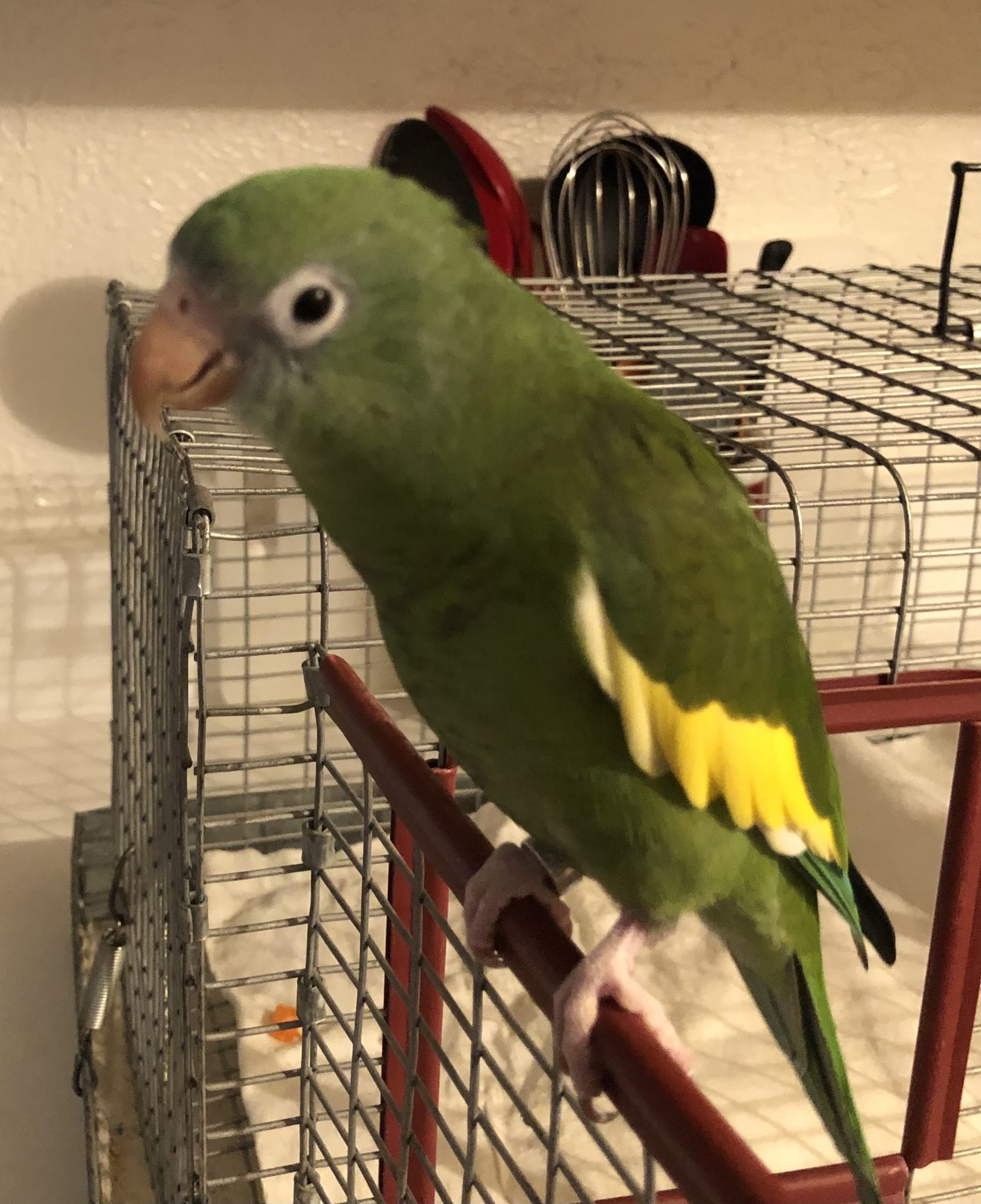Vitamin D is essential for your birds health. This article covers the “Why and How” to provide the light for Vitamin D conversion.
Vitamin D: The Essential Nutrient Your Pet Bird is Likely Seriously Lacking
Is your pet bird soaking up enough rays?
Just as humans need sunshine and vitamin D to prevent disease and be optimally healthy, so do your avian friends.
Pet Birds Need Exposure to Natural Sunlight
Domesticated birds like psittacines (parrots) and passerines (finches, canaries and other perching birds), need natural direct sunlight in order for certain metabolic processes to occur, and for a number of other health reasons as well. Just like those of you who don’t have access to year-round sunny, warm climates, birds can also become UV deficient when not sufficiently exposed to it.
However, if you do happen to live in a warm climate and have the time to supervise your bird outside, I highly recommend allowing it to spend several hours outdoors. Nothing man-made can ever completely replace the health benefits nature provides in clean, fresh air and sunlight.
Why is Ultraviolet Light so Important for Your Bird?
1. To promote vitamin D synthesis and absorption
Just as humans do, birds need vitamin D to aid in nutrient absorption and bio-assimilation. Your pet bird has an uropygial or “preen” gland above the base of the tail. This gland secretes oil. As your bird grooms, it spreads this oil over its feathers. This oil contains a compound that produces vitamin D when exposed to the sun’s ultraviolet rays. So as your bird grooms under an ultraviolet light source, it’s actually mixing up a healthy batch of vitamin D on its feathers. As your bird re-grooms his feathers coated in oil, he ingests the vitamin D. The vitamin D in his system will then be converted by his kidneys and liver to active vitamin D3 (cholecalciferol).
Another way your bird absorbs vitamin D is through his eyes.
The lens of the human eye is trichromatic, which means it contains cones that absorb only three color spectrums – red, blue and green. The human lens filters out ultraviolet light.
Not so with birds. The lens of a bird’s eye absorbs not only red, blue and green spectrums, but also UVA and UVB rays, making their vision pentachromatic. Your bird has better vision than you do, and he can also see more hues and colors than you. This enhanced vision helps birds locate certain food sources and even helps them select a mate.
Your bird’s eye is also different from yours in that he has an additional gland around his retina called the Harderian gland. The Harderian gland aids absorption of UV light into his retina and communicates with his pineal and pituitary glands to help regulate his bird’s breathing, molting, and day/night cycles as well as his migration pattern.
Your bird’s basal metabolism and overall health are in large part regulated by the pineal gland and the pituitary gland, which means the condition of the Harderian gland is also pivotal.
2. To prevent your bird from developing UV deficiency-related illnesses
A vitamin D3 deficiency frequently results in hypocalcaemia or low calcium levels. Symptoms can include:
Low egg production/hatching and poor shell quality
Bone fractures
Seizures
Shortage of vitamin D3 can also cause physical abnormalities, including a soft or overgrown beak, splayed legs, and bent keels. The avian disease stargazing (twirling) is associated with vitamin D deficiency, as is Conure Bleeding Syndrome and increasingly, many types of cancer. If you happen to own an African gray, you know how susceptible your bird is to hypocalcaemia. Recent research is pointing in the direction of a vitamin D deficiency rather than low calcium levels. Since vitamin D is required for adequate calcium absorption, lack of direct sunlight or another appropriate ultraviolet light source may reduce the effectiveness of the calcium fortified pellets you feed your gray. This can result in chronically low calcium levels.
3. To improve your bird’s overall well-being and quality of life
In my experience, I’ve seen exposure to ultraviolet light positively affect not only the physical health of my bird patients, but also their mental processes and emotional well-being.
Access to direct sunlight or an alternative appropriate source of UV light can improve conditions as varied as:
Destructive behavior like feather picking
A poor feather coat
Organ dysfunction
Immunologic disorders
Poor mood and temperament
Except for the lucky few who live in warm, sunny climates and can have their pets outside for several hours a day, most of you will need to provide your birds with indoor UV lighting to ensure they get the exposure they need for good health. Putting your bird in front of a window won’t do the trick — glass filters out the beneficial components of ultraviolet rays. There are a number of UV bulbs for birds available on the market. You will want to buy the kind that provides both UVA and UVB rays. And make sure you’re buying UV bulbs designed for birds. The UV spectrum in aquarium bulbs is in the blue range. If you happen to breed birds, you probably already know that blue spectrum light rays produce more female than male offspring. So avoid aquarium or fish bulbs, and plant or grow bulbs. Stick with UV bulbs specifically marketed for birds. Place the light about 12 to 18 inches from your bird’s perch.
I keep UV lights on my birds for around eight hours a day. You can go up to ten, but the minimum I recommend is four hours.
Five Key Ingredients for Your Bird’s Good Health
Pure water
Clean air
A species-appropriate diet that includes lots of living foods
Coconut oil and essential fatty acids
Adequate ultraviolet light





